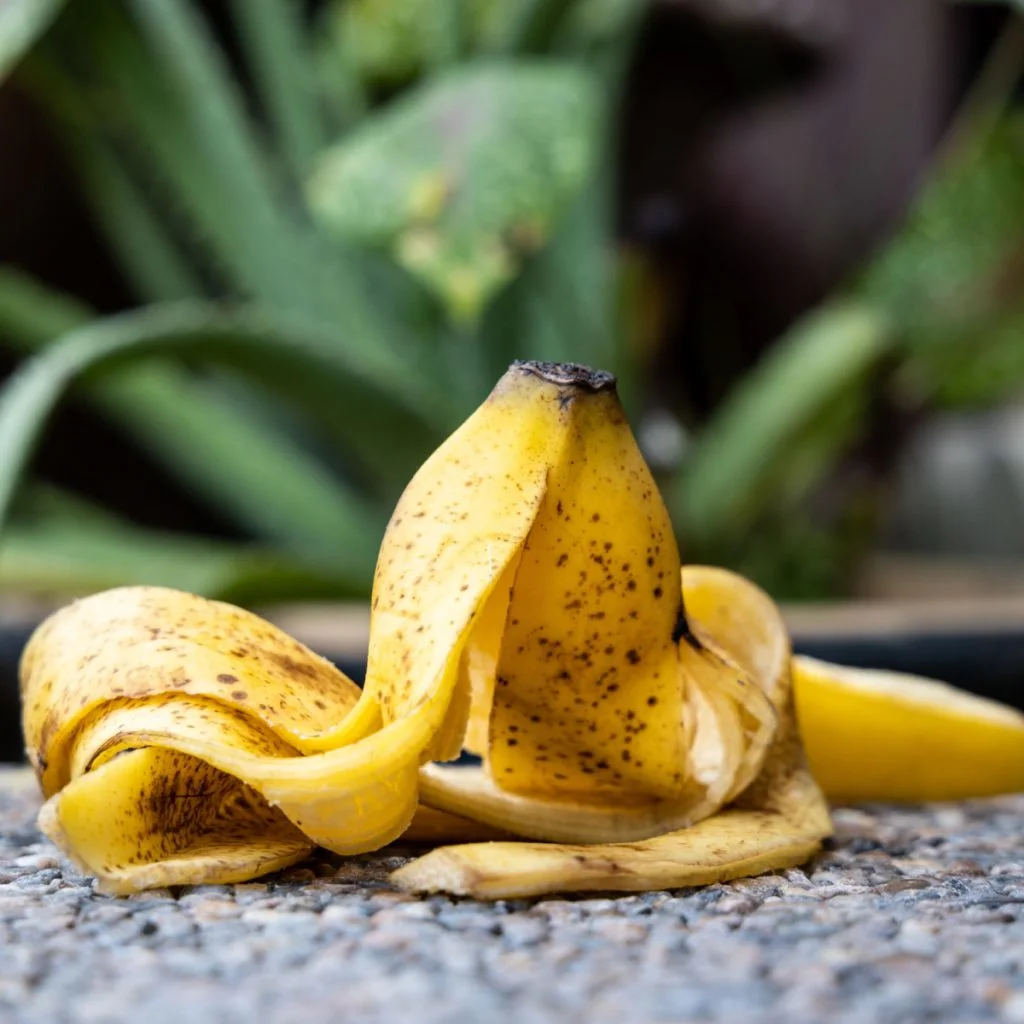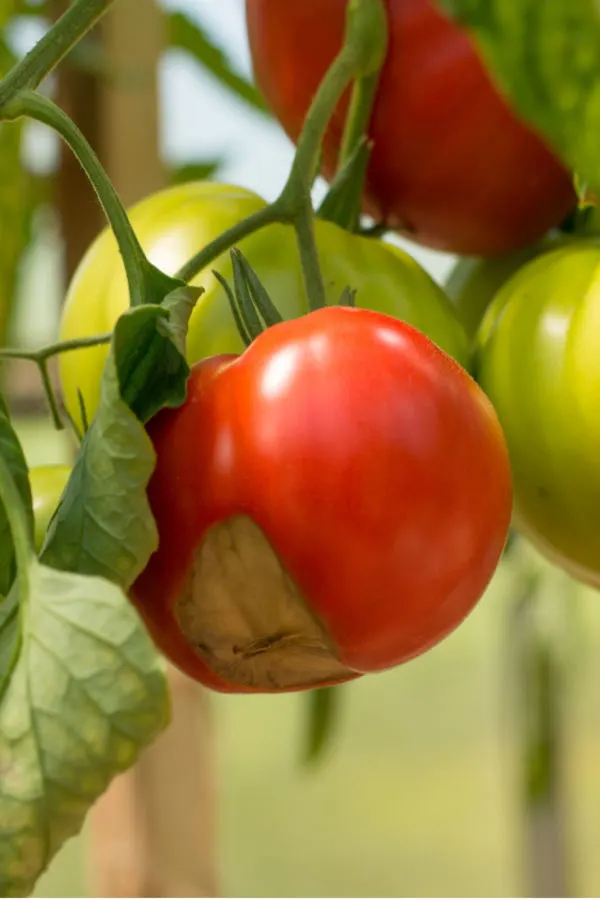Did you know that vegetable plants love being fed with banana peels? It’s true – In fact, one of the best ways to power up your vegetable plants naturally in the summer months is by simply using that leftover banana peel from your morning breakfast or snack!
Feeding your vegetable garden doesn’t always mean heading to the store to buy fertilizer. Believe it or not, banana peels are packed full of nutrients that can give your garden plants a big boost, especially when it comes to vegetables that produce flowers and fruit.
Banana peels are naturally rich in potassium and calcium. They also contain phosphorus, magnesium, and trace minerals like iron and zinc. These are all nutrients that help power strong root growth, healthy foliage, and most importantly – big blooms and a bigger harvest. And since banana peels break down easily in the soil, the nutrients become available to plants quickly.

Here’s a look at five vegetable plants that respond extremely well to banana peels, and how to use those peels to get the most power out of them for your plants!
5 Vegetable Plants That Love Banana Peels
#1 Tomatoes
Tomato plants are known for being heavy feeders. To produce strong vines, full foliage, and lots of bright red fruit, tomatoes need a regular supply of nutrients. Especially potassium and calcium.
Potassium is important for the overall health of tomato plants. It helps regulate how water and nutrients move through the plant. More importantly, it boosts the plant’s ability to grow blossoms and turn those blossoms into fruit.
Without enough potassium, tomato plants can still grow tall and green, but they will have very few tomatoes. Calcium is just as critical. It helps prevent blossom-end rot, one of the most common tomato problems that causes the bottom of tomatoes to turn black and rot before they fully ripen. See our article: How To Keep Your Tomatoes From Getting Blossom End Rot.

Banana peels provide both potassium and calcium in generous amounts. When placed in the soil around tomato plants, the peels break down and release their nutrients right where the roots can absorb them.
Tomatoes respond well to banana peels, whether they’re buried whole, chopped up, or blended into a liquid feed. For an easy boost, simply bury a banana peel about 2 to 3 inches deep, a few inches away from the plant’s stem.
As it breaks down, the nutrients will soak into the soil. You can also chop the peel into small pieces to speed up the process. Another method is blending peels with water to create a banana peel puree that can be poured around the base of the plant. This gives tomato roots even quicker access to nutrients.
#2 Why Vegetable Plants Like Peppers Love Banana Peels
Just like tomatoes, pepper plants benefit greatly from potassium and calcium. These two nutrients help peppers produce strong stems, bloom more often, and grow large, thick-walled fruit.
Without enough potassium, peppers can struggle to flower, and the fruits they do produce may be small and misshapen. A lack of calcium can also lead to poor fruit set and the same blossom-end rot that affects tomatoes.
Because banana peels break down fast and are high in both of these nutrients, they make an excellent low-cost way to feed pepper plants. Banana peel tea is especially helpful for peppers. To make it, place several banana peels in a container with water and let them soak for two to three days. As the peels sit, the water will absorb nutrients from the peels, creating a mild liquid fertilizer.
Once the tea is ready, pour it directly onto the soil around your pepper plants. This helps deliver nutrients in liquid form, which can be taken up more quickly by the roots. If you’re transplanting young pepper seedlings, you can also bury a banana peel directly in the planting hole to help the plant get off to a strong start.
Chopping banana peels and mixing them into the soil near your pepper plants also works well. Especially if you add them at the base during early flowering. This gives the plant an added boost just as it’s starting to form peppers.
#3 Cucumbers
Cucumber vines are fast growers, and they rely heavily on potassium to support that quick growth. Potassium helps strengthen vines, encourages large green leaves, and is vital for flower and fruit production. Calcium helps cucumbers develop firm, crisp fruit and supports healthy root development.
Feeding cucumbers with banana peels is a great way to give them a steady supply of both nutrients. Cucumber roots grow near the surface and can benefit from nutrients placed in the top few inches of soil. Because of this, using chopped banana peels is a good option.
Cut the peel into small pieces and mix it into the soil near the base of each vine. This way, as the peels decompose, the nutrients will be close to where the plant can use them.
Banana peel puree is another great choice for cucumbers. Blend one or two banana peels with water and pour it around the plant every two weeks to keep nutrient levels up. This can be especially helpful during mid-summer when cucumber vines are at their peak growth and fruit production. It’s an easy, natural way to keep the plants energized and producing.

#4 Zucchini & Banana Peels
Zucchini plants grow fast and produce a heavy crop, but that quick production takes a lot out of the soil. Potassium plays a big part in helping zucchini plants stay healthy and productive. It helps move sugars through the plant, which is important for flower and fruit development. Calcium keeps the plant’s leaves strong and helps prevent rot in the young fruit.
Zucchini responds well to all types of banana peel applications. When planting zucchini, placing a chopped banana peel in the bottom of the planting hole provides an early nutrient source. As the roots grow, they’ll find the nutrients and use them for quick development.
As the season continues, feed your zucchini plants with banana peel tea or puree every 2 to 3 weeks. This gives the plant a steady dose of nutrients without the risk of burning the roots, which can happen with strong synthetic fertilizers.
Because zucchini plants can grow quite large, it also helps to use banana peels as a mulch-like layer under the leaves. Chopped peels laid on the soil surface will slowly break down and feed the plant from the top down.
Using Banana Peels For Green Beans
Last but not least, if you still have some banana peels to use up – use them on your green beans! Although green beans don’t need as much nitrogen as some other vegetables, they still benefit from the calcium and potassium in banana peels.
Potassium helps the plants develop strong vines and healthy foliage, and supports the process of flowering and setting pods. Calcium is important for root development and overall plant strength, helping the bean plants resist stress and disease.
For bush beans and pole beans, burying a chopped banana peel in the soil when planting seeds can give them a small but helpful push. Once plants start flowering, feed them with banana peel tea or puree every couple of weeks. This can help greatly improve the number of pods produced.
Unlike tomatoes and peppers, green beans don’t like heavy feeding. This is why using banana peels as a mild, slow-release source of nutrition is ideal. It’s just enough to support production without overwhelming the plant.
Banana peels can also be added to compost that is worked into bean beds. This allows the nutrients to enrich the soil over time and support strong bean crops throughout the season.
One thing is for sure, vegetable plants love banana peels! And it’s a simple, natural way to feed many of your garden’s most popular vegetables. Whether you bury them whole, blend them into a tea, or chop and mix them into the soil, they can provide the right kind of nutrients at the right time to help plants bloom and produce strong, healthy crops. And all 100% naturally!
This Is My Garden
Follow Our Facebook Page For Great Gardening Tips And Advice! This Is My Garden Facebook Page
This Is My Garden is a garden website created by gardeners, for gardeners. Jim and Mary Competti have been writing gardening, DIY and recipe articles and books and speaking for over 15 years from their 46 acre Ohio farm. They publish three articles every week, 52 weeks a year. Sign up today to follow via email, or follow along!
